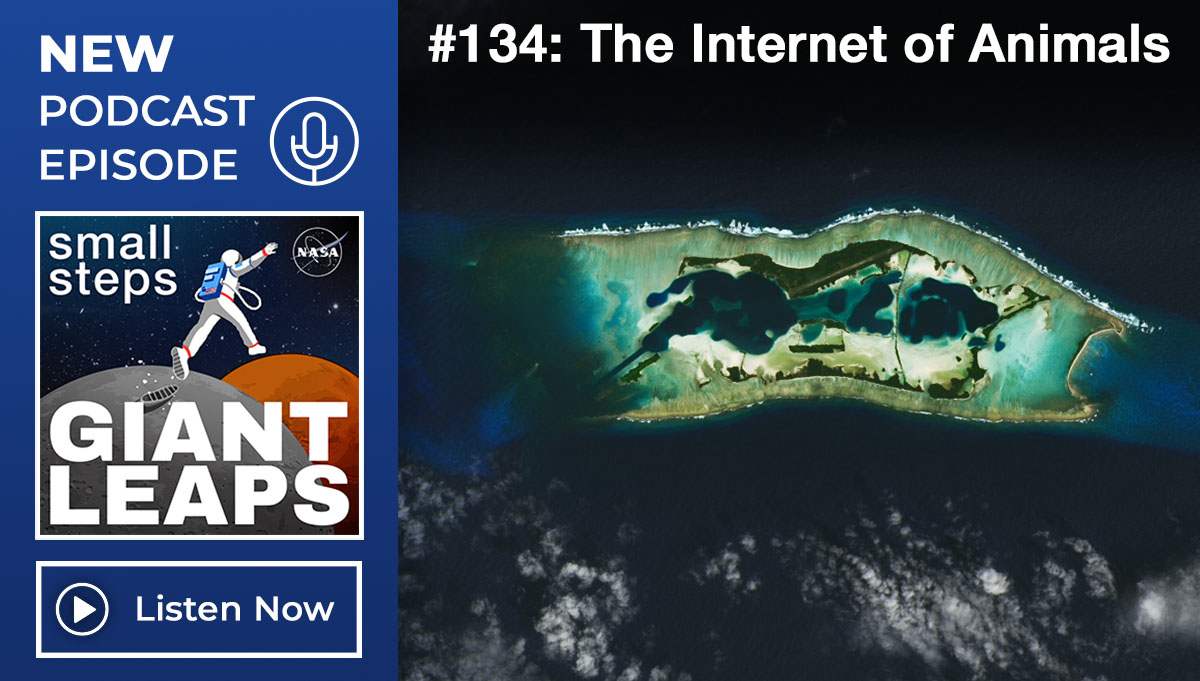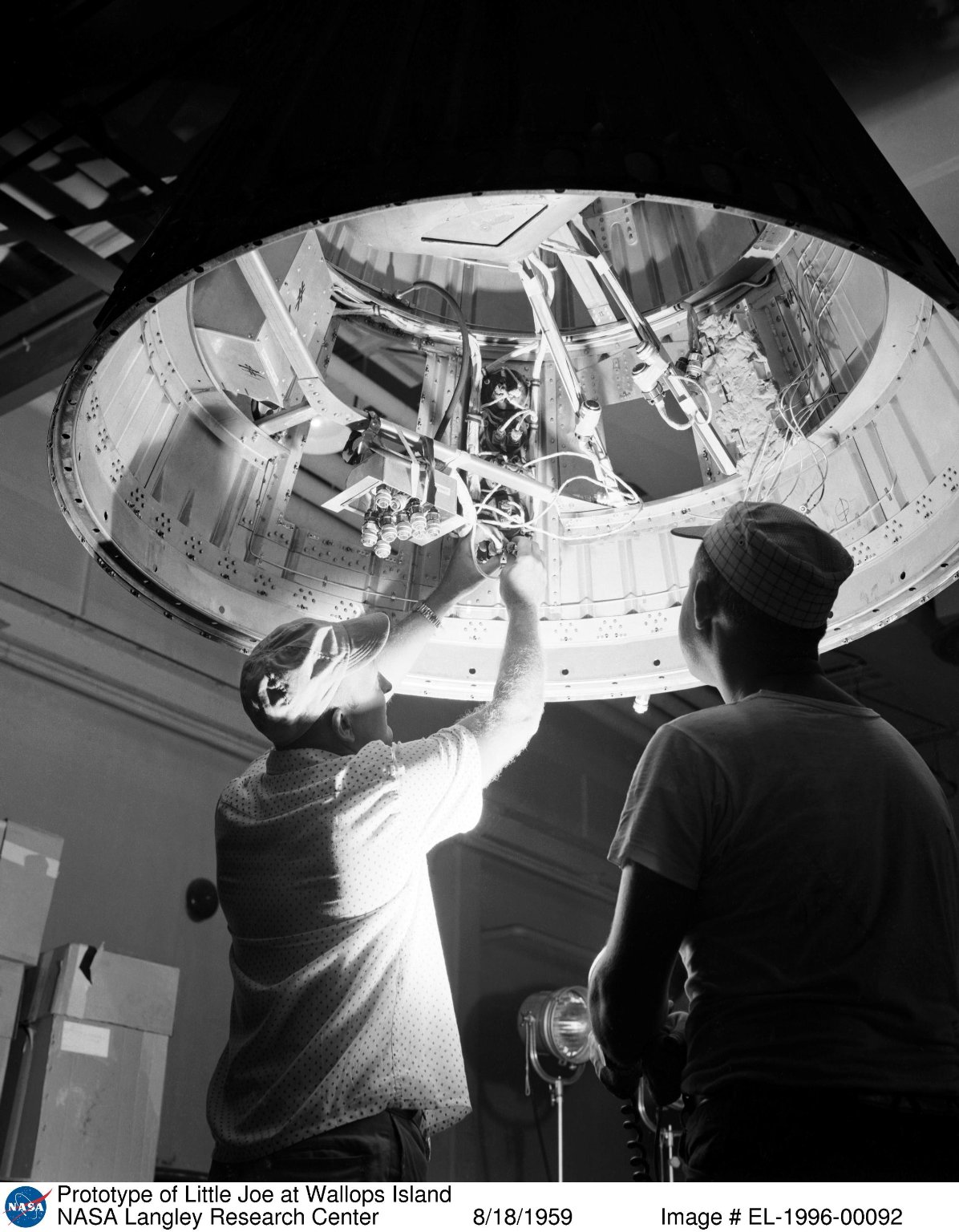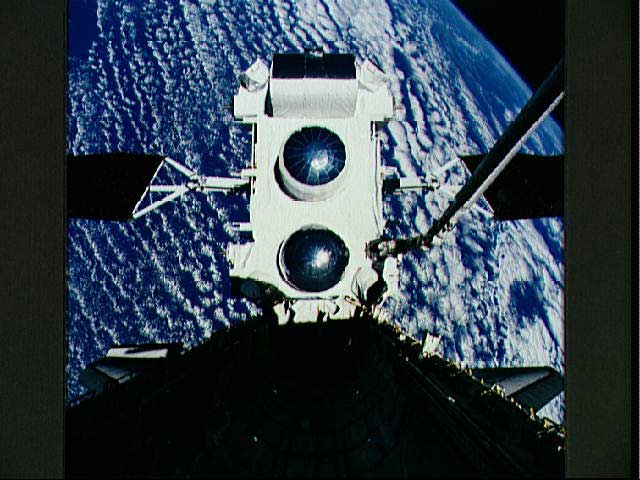By Richard Day and Ed Rogers
“The Board concludes that NASA’s current organization does not provide effective checks and balances, does not have an independent safety program, and has not demonstrated the characteristics of a learning organization.”
— Columbia Accident Investigation Board Report (2003)1
In May 2003, Goddard Space Flight Center recruited a Knowledge Management Architect to apply additional focus to the integrated management of the center’s knowledge assets — in particular, its forty-seven years of experience-based wisdom in managing space flight projects. In August of that year, the Columbia Accident Investigation Board (CAIB) released its final report calling for NASA to act more like a learning organization. As Knowledge Architect and Director of the Office of Mission Success at Goddard, we believed that the two challenges of integrating knowledge management and creating a learning organization were intertwined and must be addressed together. This is the story of how we are addressing these twin challenges at Goddard.
Academic literature suggests that a learning organization knows how to retain knowledge, appreciates the value of sharing collective knowledge, and grows more knowledgeable with each activity it performs. Knowledge management literature tells us that the core of an organization’s knowledge resides in the work units and projects where it is being generated, not in a centralized repository. The key to managing knowledge is not to extract it from its origins but to facilitate its use both at its source and within communities of practice across the organization.2 With these ideas as starting points, we set out to design an approach to improve Goddard’s performance as a learning organization while improving the way we managed our knowledge.
We started by looking at what was already happening in the Agency. There are many activities called “knowledge management” and dozens of tools and databases in use. Many of these tools seemed to offer some useful efficiency gains by automating activities, keeping records, controlling, and, in a limited way, searching documents. As we looked deeper, we concluded that, to be effective, knowledge management must go beyond simply getting the right information to the right people at the right time. Focusing solely on knowledge efficiency concerns would not necessarily create a healthy organizational learning environment and might, in fact, hinder some types of collaborative learning behavior.
NASA’s knowledge management efforts prior to Columbia tended to focus on providing information technology tools with an emphasis on capturing knowledge from workers for the organization as opposed to facilitating knowledge sharing among workers. In line with other organizations (Army, World Bank, and aerospace industry), we emphasized that the core of Goddard knowledge resides in the engineering work units and projects where it is being generated. Therefore, knowledge management should help Goddard project teams, work units, and other groups behave and function as parts of a learning organization, generating, sharing, using, and preserving their own knowledge. The divisions and other work units at Goddard are the primary owners and holders of their knowledge. Goddard’s plan is designed to help put practices in place that will facilitate the flow of knowledge and help build the local learning loops that characterize a learning organization.3 We tried to apply these lessons learned about knowledge management at Goddard to achieve meaningful change toward the goal of becoming a better learning organization.
The Goddard System of Learning Practices
Lessons from the field of strategic human resource management told us that we would need a coordinated system of organizational practices, not a single process or application.4 We also needed a representation of a learning architecture to support communication and understanding of the concept among project teams. The learning architecture is evolving into a complex, integrated map of Goddard mission success processes, but we nevertheless wanted a concept that would fit on one page, could be represented in a picture, and would make sense to any project manager in less than five minutes. After months of iterations and discussions with project participants, we settled on six practices that we incorporated into a learning-loop diagram (see figure on page 39). The architecture is designed to avoid short- term, suboptimal solutions based on efficiency models, address the three characteristics of a learning organization, and build a more reliable and sustainable organizational system. The next step was to get these six practices embedded in the Goddard project life cycle.
Practice 1: Pause and Learn (PAL)
The Pause and Learn (PAL) process is the critical foundation for learning from projects. PALs are participant discussions of what went right and wrong and what lessons the experience taught. Experience from the Army tells us PALs should occur after major events and milestones. 5 They are valuable because data collected close to the event eliminates the bias of hindsight. The material generated belongs first and foremost to the team, but generally applicable lessons and insights should flow to other projects. The first PAL sessions we did were with the Geostationary Operational Environmental Satellite/Polar Operational Environmental Satellite Program. With multiple instruments on each spacecraft, a number of Source Evaluation Boards (SEB) were needed to evaluate each instrument proposal.
A PAL we conducted helped one SEB team learn from their own challenging experience and provided practical wisdom to other SEB teams.
Practice 2: Knowledge Sharing Workshops
Many science, technical, and engineering seminars and lectures are given at Goddard as a matter of course. These are essential elements of a continuous learning culture. The Knowledge Sharing Workshops are intended to augment those activities with discussions of project management lessons rather than technical challenges and trades. Using a panel construct helps diffuse the individual focus without losing the personal story aspect of the workshop. At each workshop, senior project leaders share their personal insights, what they learned, and what they might do differently based on their recent project experience. These workshops are attended by emerging project leaders at Goddard who want to acquire the practical wisdom necessary to succeed as project managers. To encourage open sharing, these sessions are not recorded. The emphasis on conversation instead of slides and reports frees panelists to bring up even sensitive or unresolved issues.
Practice 3: Case Studies
To build organizational learning capacity for project management, the context provided by project stories must be brought into the knowledge management and learning system. A case study is the primary vehicle to do this. Case studies allow key players to present material, reflect on project management insights, and share contextual knowledge in a meaningful way. In a sense, they are constructed opportunities for fostering conversations. Participants often learn details of other projects or events that they did not know of beyond headlines. They also get to meet the people who were intimately involved with those events and to think through the decisions those people had to make at the time. In other words, they get the benefit of learning from the decision-making process itself, rather than just hearing filtered, after-the-fact explanations. Finally, hearing the story from those who experienced it builds trust, opens relationships, and fosters a sharing environment.
One of our first case studies was on the Vegetation Canopy Lidar project at Goddard that was terminated in June 2002. The case has been used internally at Goddard and twice at the Project Management Challenge conferences in 2004 and 2005. It is also being used by contractors for training outside NASA.
Practice 4: Common Lessons Learned
A diverse panel of experts is periodically convened to review all cases from the past year, looking for similarities and trends. Patterns of behavior that increase risk or the likelihood of failure are identified. Strengths and competencies that could be emulated are also called out. Their assessment is integrated with many other performance and risk indicators for appropriate corrective and preventative actions, including incorporation into processes, rules, and training.
Practice 5: GOLD Rules
The GOLD Rules are meant to reflect Goddard’s wisdom in the design, development, verification, and operation of flight systems. Collected primarily from engineering organizations, they are in essence the best design practices written down. Links are being built from the rules to standards, lessons learned, and case studies so users of the rules can access their context — their origin, intent, and sphere of effect. This allows project personnel to more accurately assess the appropriateness and applicability of the rule to their project and helps convey the embedded wisdom of the rule, not just the sterile technical specification captured in the rule set itself. It is essential that users of the rule do not stop thinking about the practice to which the rule applies. The learning context surrounding the rule enables users to continue to think creatively instead of blindly following rules and inviting possible unintended consequences. Where waivers are sought, the provided context supports a healthy risk discussion to evaluate the implications of granting a waiver or allowing for a deviation.
Practice 6: The Road to Mission Success
The training of all members of extended project teams is crucial to the future success of Goddard. Goddard is taking an aggressive approach to ensure its project leaders, line managers, scientists, engineers, resource analysts, and other professionals have the fundamental skills and the collective wisdom of experienced leaders available to them. We also need to ensure that all employees appreciate the NASA/Goddard legacy and fully understand the way we do business at Goddard and our expectations for safety and mission success. The center has developed a comprehensive series of two-day workshops called the “Road to Mission Success” that will instill the requisite NASA core values and wisdom embedded in cases, PALs, common lessons, and workshops into future Goddard leaders. Senior managers are involved in delivering course cases. The series will become an integral component, and perhaps the capstone, of many leadership training programs across the center and will provide a common, consistent exposure to how the center functions and achieves mission success.
Progress So Far
Goddard has made tremendous progress in building an effective learning organization and responding to the challenges facing NASA in a post-Columbia environment. To succeed in the long term, we must continue to support and reinforce learning behavior that enhances mission success across projects while investing in human capital strategies that assure sustainability in the future. Accomplishing these goals requires monitoring the health of teams, continuously integrating work processes, and facilitating knowledge sharing within the organization.
The knowledge management reliability problem is how to ensure that engineers bring the line organization’s full knowledge, not just their own individual knowledge, to bear on each project. Project outcome should depend less on which engineer is assigned to the project than on the accessibility of the organization’s collective expertise. A lack of sharing at the branch level could result in an inability to deliver reliable expertise to projects. Anecdotal evidence indicates this is not an insignificant issue. Experienced project managers relate stories of how important it is to fight to get the right people on the team, tacitly acknowledging that the knowledge and expertise they need for the project are “owned” by particular individuals.
Clearly NASA is concerned about losing expertise as people retire, but we need to build a system that does not depend on the “expert guru” model and instead relies on a shared knowledge community that does not retire but evolves with time. The knowledge management challenge regarding human talent is not how to capture knowledge from people as they leave the organization but how to build learning into all that they do while they are here, so when they are ready to leave, most of their knowledge is embedded in the organization, people, processes, and policies that remain. Such a system will both sustain knowledge and produce more reliable results. This is the goal of Goddard’s learning practices system.
Knowledge sharing behavior attracts bright people to organizations. Intellectually curious people know that they have the best chance of being stimulated, creating new knowledge, and participating in exciting discoveries where a team or community of like-minded thinkers are engaged in open and honest sharing of their ideas, insights, and experiments.
Goddard wants to continue to attract these people to build on the competencies that have characterized the center for forty-seven years. Though much remains to be done, we have embarked on an ambitious plan to help us function more like a learning organization and in so doing achieve mission success.
- Richard Day is Director of Mission Success at the Goddard Space Flight Center.
- Edward Rogers is the Knowledge Management Architect at the Goddard Space Flight Center.
1. Columbia Accident Investigation Board Report, Vol. 1 (Washington, D.C.: Government Printing Office, August 2003).
2. Etienne Wenger, Communities of Practice: Learning, Meaning and Identity (Cambridge, UK: Cambridge University Press, 1998).
3. P. Senge, The Fifth Discipline (Boston: Harvard Business School Press, 1990).
4. J. Barney and P. Wright, “On becoming a strategic partner: The role of human resources in gaining competitive advantage,” Human Resource Management 37(1) (1998): 31-46.
5. E. Rogers and J. Milam, Pausing for Learning, IEEE Aerospace Conference Proceedings (March 2005).
6. T. Davenport and L. Prusak, Working Knowledge (Boston: Harvard Business School Press, 1998).








